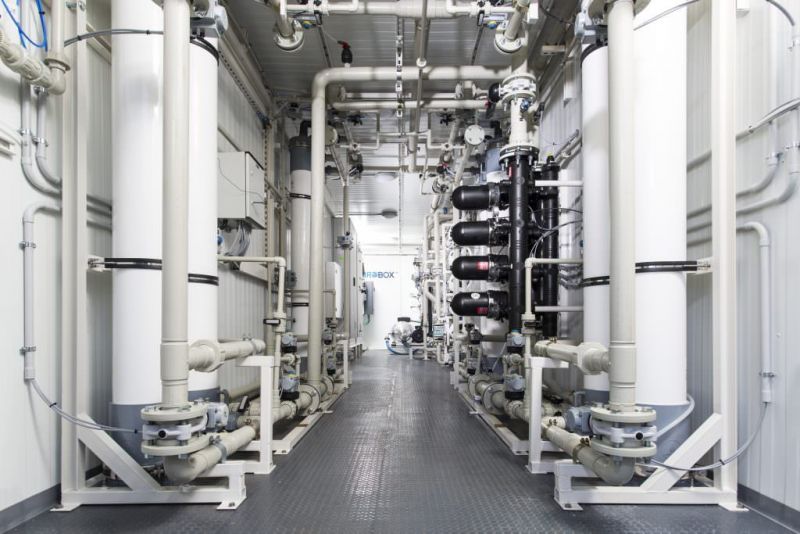Brackish Water as a Resource
Published on by Michal Rosenzweig, Previous Marketing Manager Fluence in Technology
There’s a great deal of talk and debate about the value of treating brackish water, or water that is more saline than fresh water, but not quite as saline as seawater.
Brackish water can result from the mixing of seawater with fresh water, as in surface waters such as estuaries or other watery ecosystems, or it can occur underground in aquifers.

Fluence’s containerized NIROBOX™ BW desalinates brackish water without the expense of extensive infrastructure.
Brackish Groundwater
However it’s defined, the problem is there is a lot of salty water available worldwide that needs proper treatment in order to become potable. The USGS notes:
There is an extensive amount of very salty water in the ground in the western United States. In New Mexico, approximately 75 percent of groundwater is too saline for most uses without treatment. Water in this area may have been leftover from ancient times when saline seas occupied the western U.S., and, also, as rainfall infiltrates downward into the ground, it can encounter rocks that contain highly soluble minerals, which turn the water saline. Groundwater can exist and move for thousands of years and can thus become as saline as ocean water.
Texas, for example, has abundant underground water, including 880 trillion gallons of primarily brackish groundwater. State officials are struggling to define “brackish” to better conserve those supplies. (Some lawmakers recently sought to have it be defined as any water with a level of total dissolved solids between 1,000 and 10,000 milligrams per liter.) The Texas Tribune explained:
Hundreds of trillions of gallons of brackish water are estimated to lie underneath Texas. […] There are just a few problems with the water: It has too much salt and other dissolved solids to be fit to drink, treating it carries a significant expense, and regulating its withdrawal – like with all Texas groundwater – has already proved to be tricky.
Therefore, the problem in some areas is not water quantity, but water quality. Brackish water is used in some areas of the world for irrigation, but most industries can’t use it since the solids could damage equipment. It’s not good for livestock or human consumption.
Saltwater Intrusion
Because freshwater wells — which are often the source of municipal drinking water — draw from groundwater supplies, contamination by saline water poses a threat to city drinking water supplies, particularly near coastlines.
The problem is seen worldwide. Roughly half of the world’s population lives within 200 km of a coastline. Areas already experiencing saltwater intrusion include coastal New Jersey, Florida, and New York in the U.S., as well as cities along the Laizhou Gulf in China; Manila, Philippines; and Perth, Australia. In the Maldives, the island of Thoddoo is using a combination of rainwater harvesting and desalination to protect its aquifers from overexploitation.
The Maldives is a good example of a populated island in need of potable public water supplies. Often the available feed water in island communities is both saline and brackish, depending on the source. Well water, for example, is frequently brackish.
Another example can be found on the island nation of Cyprus, where groundwater supplies for the city of Limassol were too brackish for drinking, and had high nitrate levels. Fluence constructed a desalination plant at Garillis for Cyprus Water Development that uses brackish water reverse osmosis to produce 10 million L/d of high-quality drinking water.
Read more: Fluence

Media
Taxonomy
- Treatment
- Technology
- Saline Water
- Brackish Water
- Desalination
- Sustainable Desalination
- Desalination Pre-treatment
- Building Construction
- Desalination Plant